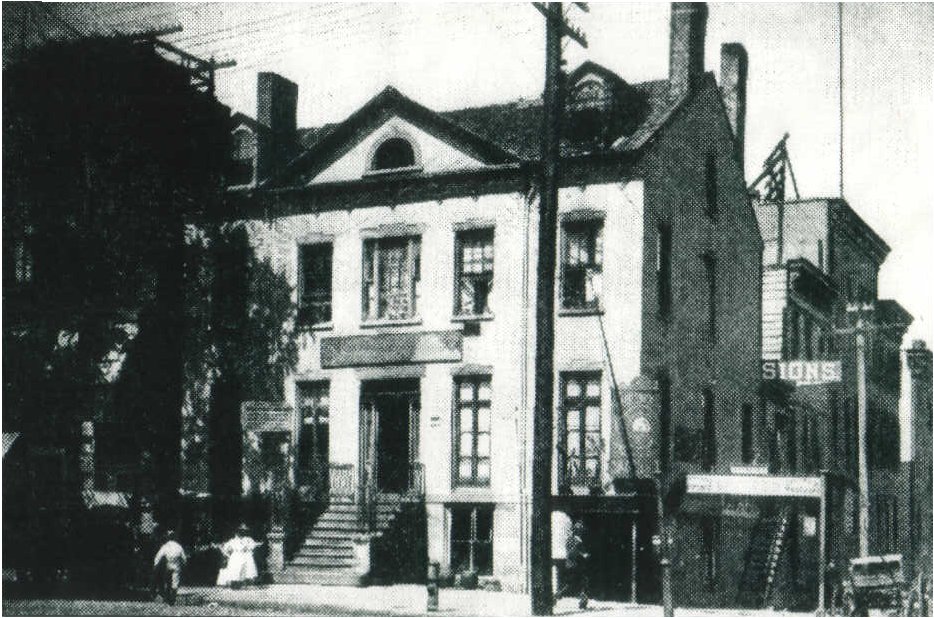 |
 John Jacob Astor
John Jacob Astor
By Leonard A. Luizzi, Jr.
If you were to build a summer home away from the city, would you pick a place with shady trees and cool breezes from the river? In 1829, that was just what John Jacob Astor (1763-1848) had in mind. For his summer residence, he picked Hoboken!
Astor was one of the richest men in the world. He could have built his "Villa," as the Astor home was called, anywhere he wanted. He chose the southwest corner of Second and Washington Streets. This is where he would spend his time away from crowded New York City.
Born in Waldorf, Germany, Astor came to New York when he was 20 years old. At first, he lived in Staten Island, where, at the age of 21, he started a ferry service. Actually, Astor would transport people from Manhattan to Staten Island in a small row boat. Soon he had a larger boat, and eventually a small fleet of ferry boats. By the age of 30, he had a fleet of ships and was in the fur trading business. Astor called himself "The Commodore." With the profits from his fur and shipping businesses, Astor went into real estate. He bought as much of Manhattan Island as he could, saying that if he could be born again, he would buy all of Manhattan!
Astor knew a good thing and a good investment when he saw it. He had heard about a place across the Hudson with shade trees, gardens, open fields, cool breezes, and some ale houses -- a place where New Yorkers could get away from the city in their leisure time. Before Newport, Rhode Island became famous, Hoboken was the playground of the rich and famous.
In 1829, The Commodore built his "Villa" on Second and Washington. He had a large garden with flowers and shrubs that he brought to Hoboken from all parts of the world. From his mansion he had an unobstructed view of the Hudson and of his ships coming into port and leaving.
Many famous people came to visit Astor in Hoboken. Among them were Martin Van Buren, a future President of the United States, and John Beekman, who has a Manhattan street named after him. Among the many writers and poets who visited Astor at his Villa were Washington Irving and Edgar Allen Poe. While on a visit to Hoboken, Poe heard about the murder of a young girl named Mary Rogers, whose body was found floating in the Hudson River near Sybil's Cave. Poe used her death as a basis for "The Mystery of Marie Roget," one of the greatest detective stories of all time.
One of Astor's favorite Hoboken spots was the 76 House, a tavern that stood near what is now Newark and Hudson Streets, and that had a large green in front with a view of the Hudson River to the east, and of River Walk to the north. Astor and his guests would often sit there to enjoy the view and the local brew while they talked business. Sometimes they would go to Sybil's Cave on River Walk for a penny glass of mineral water.
When The Commodore decided to build New York City's first luxury hotel, he tore down his Manhattan home to erect the Astor House Hotel. While the hotel was under construction, Astor actually lived in his Hoboken Villa full time. He moved back to New York only nine months before he died in 1848.
John Jacob Astor is just one of the many people who have become a part of the history of the wonderful Mile Square we call Hoboken!

|
|
 |